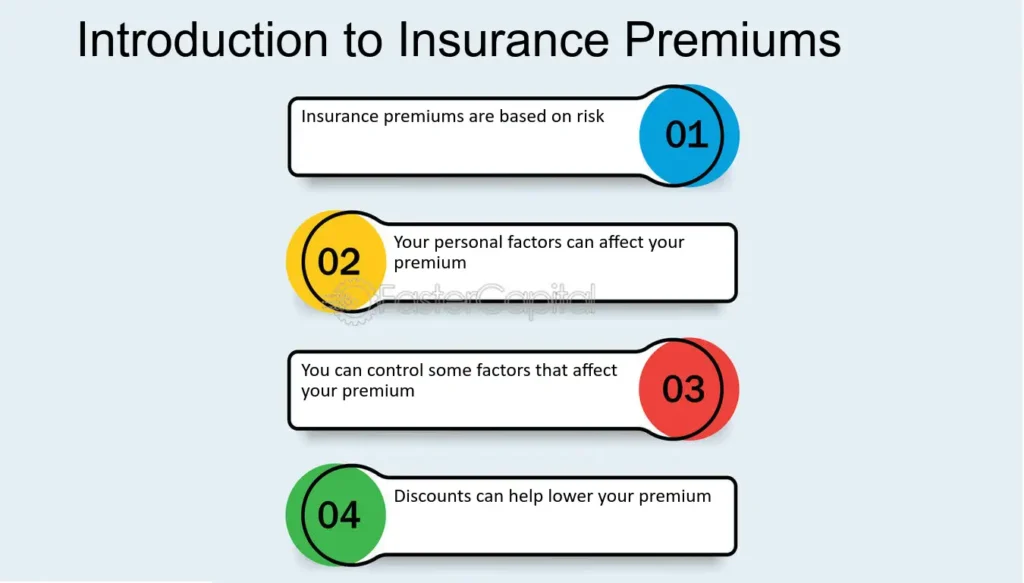Auto insurance is a necessity for every vehicle owner, but it can also be one of the most significant expenses associated with owning a car. As insurance premiums continue to rise due to various factors such as inflation and increased claims, finding ways to reduce your auto insurance costs has become more important than ever. Luckily, there are several strategies you can implement to lower your auto insurance premium in 2024 without sacrificing coverage.
In this article, we’ll explore how to lower your auto insurance premium in 2024. We’ll discuss factors that influence your premium, smart ways to save, and tips for finding the best insurance policy to fit your budget. This comprehensive, SEO-friendly guide will help you navigate the auto insurance landscape and make informed decisions to reduce your costs.
Factors That Influence Your Auto Insurance Premium
Before diving into how to lower your auto insurance premium, it’s essential to understand the factors that affect your insurance costs. By knowing what impacts your rate, you can better target areas where you can make adjustments and potentially save money.
- Driving Record: Your driving history is one of the most critical factors insurers consider when calculating your premium. Drivers with a clean record typically pay lower premiums, while those with accidents, traffic violations, or DUIs may face higher rates.
- Vehicle Type: The make and model of your car can significantly impact your premium. Expensive or high-performance vehicles generally cost more to insure because they are more costly to repair or replace. Additionally, cars with poor safety ratings may also result in higher premiums.
- Location: Where you live plays a crucial role in determining your premium. Urban areas tend to have higher rates due to increased traffic, higher crime rates, and a greater likelihood of accidents or theft. Rural areas, on the other hand, may have lower premiums.
- Credit Score: Many insurance companies use credit scores as a factor in determining premiums. A higher credit score suggests responsible financial behavior, which can translate into lower rates. Conversely, a lower credit score may result in higher premiums.
- Age and Experience: Younger and less experienced drivers typically pay higher premiums because they are considered higher-risk drivers. As you gain more driving experience and reach certain age milestones, your rates may decrease.
- Coverage Level: The type and amount of coverage you choose will affect your premium. Higher coverage limits and comprehensive coverage options come with higher costs. Conversely, choosing lower limits or reducing coverage can help reduce your premium, but it may leave you underinsured.
- Mileage: The more you drive, the more likely you are to get into an accident. Insurers often charge higher premiums for drivers with long commutes or high annual mileage. Conversely, low-mileage drivers may be eligible for discounts.
- Claims History: A history of filing claims, even if they were minor, can result in higher premiums. Insurance companies view frequent claims as a sign of increased risk.
How to Lower Your Auto Insurance Premium in 2024
Now that you understand the factors that impact your auto insurance premium, let’s explore the various ways you can lower your insurance costs in 2024. Whether you’re shopping for a new policy or looking to reduce your current premium, these strategies can help you save money.
1. Shop Around and Compare Quotes
One of the easiest and most effective ways to lower your auto insurance premium is to shop around and compare quotes from different insurance companies. Each insurer has its own method for calculating rates, so premiums can vary significantly between providers for the same coverage.
- How to Do It: Use online comparison tools to gather quotes from multiple insurance companies. Be sure to compare the same coverage levels and deductibles across each provider to get an accurate comparison.
- Pro Tip: Don’t settle for the first quote you receive. Insurance companies often adjust their rates based on market conditions, so it’s worth checking for new quotes every year or when your policy is up for renewal.
2. Increase Your Deductible
A deductible is the amount you pay out of pocket before your insurance kicks in for a claim. By choosing a higher deductible, you can lower your monthly premium because you’re taking on more of the financial risk.
- How to Do It: Speak with your insurer to see how much you can save by raising your deductible. For example, increasing your deductible from $500 to $1,000 could result in significant savings on your premium.
- Pro Tip: Make sure you can afford to pay the higher deductible in the event of an accident. It’s important to strike a balance between saving on your premium and having an affordable deductible.
3. Bundle Your Policies
Many insurance companies offer discounts to customers who bundle multiple policies with them. For example, if you have homeowners or renters insurance, you can often get a discount by purchasing your auto insurance from the same company.
- How to Do It: Contact your current insurance providers to see if they offer bundling discounts. If you don’t already have multiple policies with one company, consider switching your policies to take advantage of the savings.
- Pro Tip: Bundling isn’t always the best deal, so make sure to compare the total cost of bundled policies with separate policies from other providers.
4. Take Advantage of Discounts
Most insurance companies offer a wide range of discounts that can help you lower your premium. Common discounts include safe driver discounts, good student discounts, multi-vehicle discounts, and discounts for anti-theft devices or advanced safety features in your car.
- How to Do It: Ask your insurer about any available discounts, and make sure you’re taking advantage of all the ones you qualify for. Some discounts may require you to provide proof, such as a copy of your driving record or transcripts for student discounts.
- Pro Tip: Be proactive about checking for new discounts, especially if your circumstances have changed. For example, if you’ve recently installed anti-theft devices or completed a defensive driving course, you may qualify for additional savings.
5. Drive Safely and Maintain a Clean Record
As mentioned earlier, your driving record is one of the most significant factors that affect your auto insurance premium. Avoiding accidents, traffic violations, and claims can help you maintain a low premium over time.
- How to Do It: Drive safely, follow traffic laws, and avoid speeding or reckless driving. If you’ve had violations or accidents in the past, improving your driving habits can lead to lower premiums when your record is reviewed by insurers.
- Pro Tip: Some insurers offer accident forgiveness programs, which prevent your premium from increasing after your first at-fault accident. Ask your provider if this is an option.
6. Consider Usage-Based or Pay-Per-Mile Insurance
Usage-based insurance (UBI) or pay-per-mile insurance programs offer personalized rates based on how much and how safely you drive. These programs use telematics devices or smartphone apps to track your driving habits, such as mileage, speed, and braking patterns.
- How to Do It: Contact your insurance company to see if they offer a UBI program. Many major insurers, including Allstate and Progressive, offer these programs under names like Drivewise® or Snapshot®. If you’re a low-mileage driver or have excellent driving habits, you could save a significant amount on your premium.
- Pro Tip: Be honest about your driving habits. If you tend to drive aggressively or frequently, a usage-based program may not result in savings.
7. Reduce Coverage on Older Vehicles
If you own an older car with a low market value, you may not need to carry full coverage (comprehensive and collision insurance). These coverages can add a significant amount to your premium, and if your car is worth less than the deductible plus the premium, it may not be worth it.
- How to Do It: Check the current value of your vehicle using resources like Kelley Blue Book or Edmunds. If your car is worth less than $4,000, consider dropping collision and comprehensive coverage and opting for liability-only insurance.
- Pro Tip: Keep in mind that dropping coverage means you won’t be reimbursed for damage to your car in an accident that’s your fault, so weigh the risks before making this decision.
8. Maintain a Good Credit Score
In many states, insurance companies use credit scores as part of their formula for determining premiums. A higher credit score indicates to insurers that you’re financially responsible, which can lead to lower premiums.
- How to Do It: Pay your bills on time, reduce your debt, and check your credit report regularly for errors. By improving your credit score, you may qualify for lower insurance rates over time.
- Pro Tip: Some insurers offer discounts for customers with excellent credit, so be sure to ask if your score qualifies you for any additional savings.
9. Limit Claims and Pay Small Expenses Out of Pocket
Filing frequent claims, even for minor incidents, can lead to higher premiums. Insurance companies view drivers who file multiple claims as higher risk, which could result in increased rates when your policy is renewed.
- How to Do It: For small damages or minor accidents, consider paying out of pocket rather than filing a claim. This can help you maintain a claims-free record and keep your premiums lower.
- Pro Tip: Before filing a claim, weigh the cost of the repair against your deductible and the potential increase in your premium. In some cases, it may be more cost-effective to handle minor repairs on your own.
10. Review Your Policy Annually
Your life circumstances and driving habits can change from year to year, which means your insurance needs may change as well. Reviewing your policy annually allows you to make adjustments and potentially save money.
- How to Do It: Contact your insurance company before your policy renewal date to review your coverage levels and discounts. Ask about any changes in rates or new discount opportunities that may have become available.
- Pro Tip: Life events such as getting married, moving, or purchasing a new car can impact your insurance premium. Keep your insurer informed of any major changes to ensure you’re getting the best rate.
Conclusion
Lowering your auto insurance premium in 2024 is possible with a little research, strategic adjustments, and proactive management of your policy. By shopping around for quotes, taking advantage of discounts, driving safely, and considering alternative insurance models, you can significantly reduce your auto insurance costs without sacrificing essential coverage.
Remember that every driver’s situation is different, so the strategies that work best for you will depend on your driving habits, vehicle, and financial situation. By implementing these tips and regularly reviewing your policy, you can ensure that you’re getting the best possible rate on your auto insurance in 2024.


